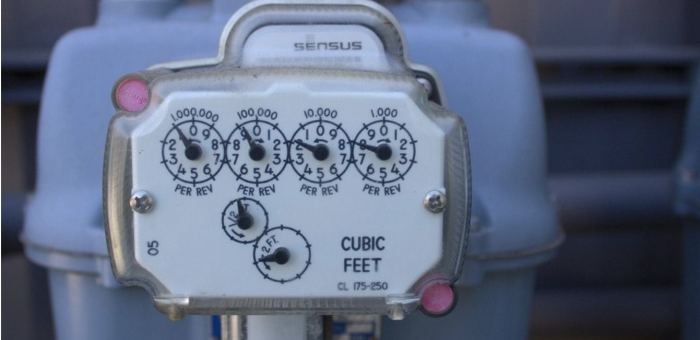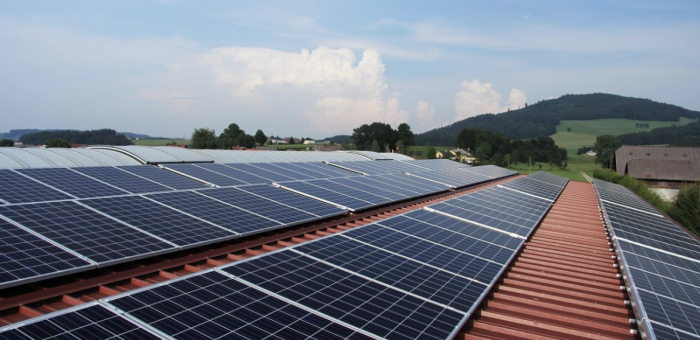Summer fun has arrived, but it’s not just cookouts and pool parties. As the temperature creeps up, so does the need for relief on the hottest days. This is instantly available within your air-conditioned home, but that comfort comes at a cost: higher electric bills.
The more you run your air conditioner and the lower you set your thermostat, the more you can expect to pay. Such practices damage both your wallet and the environment. Do your part by following our suggestions.
We will explain how to set your thermostat in the summer to save money. You’ll also find bonus techniques for saving on your energy bill.
Smart technology is one of many great solutions for adjusting your home’s climate and reducing energy costs.
[ctafirst]
Key Tips for How to Set Your Thermostat in the Summer Months
Your thermostat is one of your most useful resources for keeping energy consumption under control. With the quick turn of a dial or press of a button, you can dramatically reduce your energy bills and your carbon footprint. These simple tips should help.
Avoid an Extremely Low-Temperature Setting When Setting Your Thermostat in the Summer Months
After dealing with excessive humidity, nothing feels quite as refreshing as hanging out in an icy-cool home. Unfortunately, those satisfyingly low temperatures tend to make your electric bill skyrocket. The bigger the difference between the indoor and outdoor temperature, the more you can expect to pay.
If you’re determined to keep costs manageable, resist the urge to turn down the thermostat on a sweltering day. Energy Star recommends maintaining an ideal temperature of 78 degrees Fahrenheit when you’re home and awake. At night, you can increase this to 82 degrees, and 85 degrees is perfectly acceptable when you’re out of the house.
These increases may not leave you quite as comfortable, but you may be surprised by how quickly your body adjusts to warmer temperatures if you give it a chance. Be sure to dress for the warm weather, opting for lightweight clothes when possible, and ditching your heavy blankets at night.
If you’re absolutely miserable at a higher setting, reduce the temperature a few degrees at a time to determine where your comfort level lies.
Use a Programmable Thermostat to Increase Indoor Temperature Whenever You Are Away
One of the keys to set your thermostat in the summer is using programmable thermostats. Programmable thermostats take the guesswork out of maintaining your home’s climate. Capable of adjusting temperatures according to previously programmed settings, these thermostats deliver impressive energy savings.
If adjusted strategically, programmable thermostats could increase your home’s temperature during work hours or other times in which you’re typically away from home.
Ready to take another step up? Consider investing in smart technology. Using smart thermostats allows you to control your AC system when you’re away.
Today’s most advanced systems feature learning capabilities. Under this approach, your thermostat uses your typical household patterns to determine which temperatures you prefer at certain times or in specific situations. It then makes adjustments as needed to simultaneously boost comfort and limit energy consumption.
Change the Direction of Your Ceiling Fans to Complement Air Conditioner Efforts
Ceiling fans play heavily into home temperature and general comfort—but only if used properly. If operated in a clockwise direction, fans may actually pull cool air towards the ceiling. This forces your cooling system to work harder with inferior results.
As the trademark heat of summer arrives, check that you’re running all fans in a counterclockwise direction. This will generate columns of cool air, thereby creating the impression of lower temperatures. Resultantly, you can add several degrees to your thermostat.
For an even cooler feel, turn the fan’s speed to its highest setting. This will create a windchill effect that feels refreshing even as the actual temperature in your home remains the same.
[ctafirst]
Other Ways to Increase Energy Savings While Cooling Your Home
Your thermostat plays a huge role in determining the comfort of your home and the cost of keeping it cool, but it is by no means the only factor that holds sway. Other options include the following:
Update Your Windows
Window-related heat gain and loss are responsible for a major share of your current energy bills. Infrared laser thermometers provide excellent insight into window efficiency. If the window area provides a significantly colder or warmer reading than your home’s interior, there could be leaks.
If you’re ready for replacements, pay attention to National Fenestration Rating Council (NFRC) ratings. When in doubt, opt for ENERGY STAR-certified products. Keep in mind that many windows are rated highly in some—but not all—geographic regions.
Find Energy Efficient Air Conditioning Units for Your Home Type
The right air conditioning unit can make a world of difference. Efficient models are always preferable, but these should be selected according to your home’s size and layout.
Your setup will likely involve one of two main categories: central or window AC. Both can be advantageous in their unique ways and present considerable challenges worth addressing.
No single air conditioning approach is ideal in every home. So, think carefully before you settle on a solution.
One-Story Home
Small window ACs are often sufficient for ranch homes and other spaces that are one story. Don’t automatically select the AC with the lowest price tag; an efficient unit will save you far more over time. Still, you don’t want to waste valuable resources on an overpowered unit.
Pay close attention to BTUs (British Thermal Units), as they relate to your home’s size. If your home occupies a single floor and 1,050 square feet or less, a 15,000 to 18,000 BTU AC should do the job. With a window unit, it is important to figure out how to set your thermostat in the summer.
Two-Story Home
If you rely on window units in a larger home, watch out: air conditioning costs can increase at a dizzying pace with each room you add to the mix. If your home occupies two floors, you’ll almost certainly save in the long-term by investing in central ACs.
Drawing on the power of your furnace, central AC systems take in warm air via your home’s ducts. This air blows across the evaporator coil, which is usually situated near the furnace. Heat is then removed from the air.
The result—even cooling throughout the entirety of your home, plus a quieter AC system that costs less to run than a series of window units.
In some cases, it’s possible to get by in a large, two-story home without the luxury of central air. If, for example, you spend the vast majority of your time downstairs, one or two high-powered window units should get the job done. This setup is most favorable when you have excellent ventilation and only need a few rooms to remain cool.
Check Current Systems for Air Leaks or Issues With Vents
Careful AC and thermostat selection is essential, but maintenance is just as important. Even the most reliable systems will experience issues from time to time. However, early detection can prevent small problems from spiraling out of control.
To prevent air leaks or venting problems, schedule professional tune-ups at least once a year. Older units may require more frequent checks. A typical inspection will aim to uncover hidden issues with the following components:
- Fuses or wiring
- Electrical connections
- Filters
- Thermostat
- Ductwork
- Refrigerant leaks
- Evaporator coil
HVAC professionals can make small adjustments or major repairs to keep your system running smoothly. Not only will these services extend the life of your HVAC setup, they could make your entire heating and cooling system more efficient.
Save on Your Electric Bill During the Hot Summer Months
Now that you know why and how to set your thermostat in the summer, it’s time to take action. This is only the beginning; a variety of strategies boost your home’s efficiency and comfort. Small steps can have a major impact over time; so, don’t hesitate to tweak your approach.
If you’re on the hunt for other ways to save on electricity, take advantage of the smart technology from Power Wizard. Transparent and unbiased, we are determined to provide the best possible rates. With our help, overpaying will be a thing of the past. Reach out today to get an estimate.
[ctafirst]







